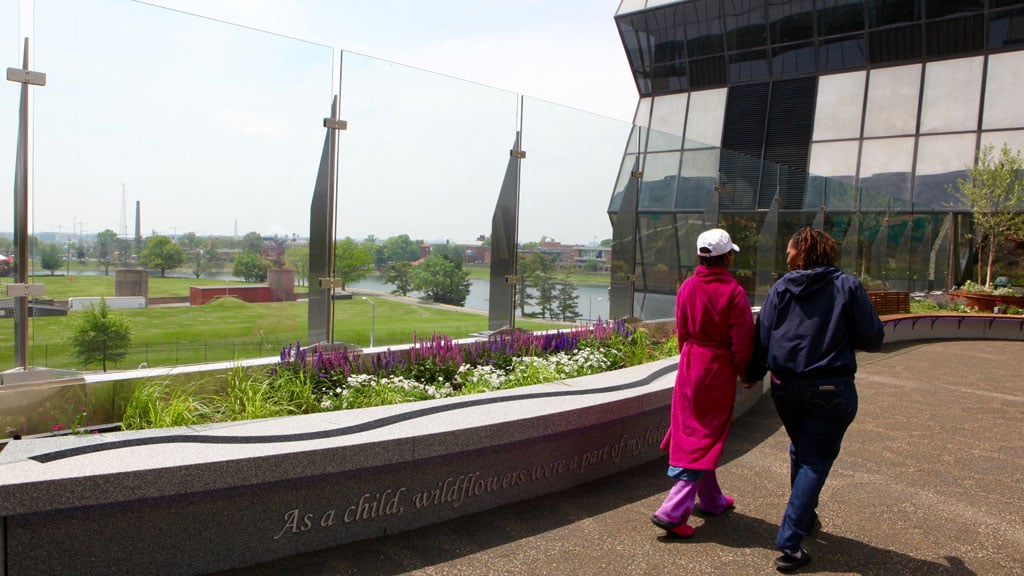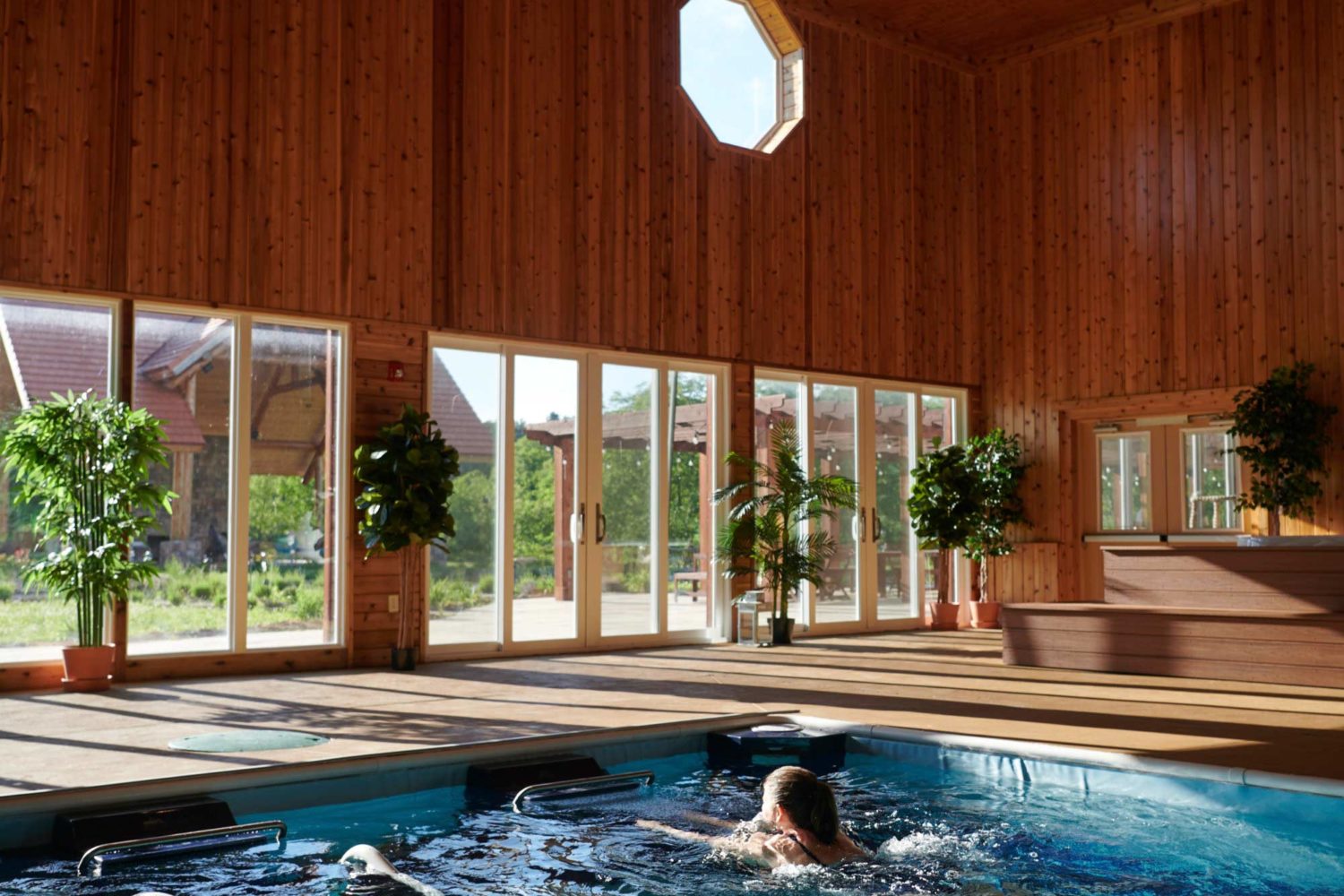It’s an unintended consequence of hospital stays that patients spend an inordinate amount of time indoors—sometimes in the same room—for weeks or months on end. Take Destiny Jackson, pictured in the pink bathrobe above with her mother Teresa Wesley. She’s a 13-year-old girl who checked into Walter Reed on February 13. Her failing kidneys have kept her in the hospital for months, including a transfer to Children’s National.
While some patients can’t leave their rooms during treatments, Jackson is one of the lucky ones who gets to walk around. And now, that doesn’t just mean she gets to go down the hall—she can enjoy the sunshine on Children’s National’s new rooftop healing garden.
Since the garden’s soft opening in the fall, patients and their families have slowly started discovering the amenity. With the celebration of the grand opening of the garden on April 28, it’s only a matter of time before more start taking advantage of it.
Take, for example, Lybbi McLane, the mother of 15-year-old Caoilinn, who went to the hospital in the middle of the night on November 11, and was shortly after diagnosed with leukemia. McLane says the prior to that visit to the hospital, Caoilinn was healthy and active, and for that reason, when the treatment plan at Children’s National Health Center required that Caoilinn remain in the PICU for 31 days before moving right into her next rounds of treatment, McLane was most worried about how being cooped up would affect her daughter’s spirits.
“When she was first admitted, people were worried about lots of things. She’s a teenage girl, and she’s going to lose her hair, but she didn’t care. She was like, ‘Whatever, I’ll lose my hair. Let’s cut it and donate it now,'” says McLane. “The main thing I knew I was concerned about was she’s very active—she loves soccer, she loves beach volleyball, she competes, she loves to be outside, she’s physical—and I knew that was going to be the hardest obstacle for her.”
McLane was walking down the hall one day when she noticed a wall that had hidden the windows was gone. Instead, she saw light. She asked a hospital employee what was going on outside, and when the staffer told her that the hospital was building a rooftop garden, she was overjoyed. As a parent, she’d stayed close while her daughter underwent treatment. When the garden was finally completed and they started allowing patients outside, McLane brought her daughter out to experience the fresh snow that had fallen. It had been 70 days since Caoilinn had been outside.
“I bundled her up in a bunch of blankets and I rolled her down in the chair. I rolled her around and she was just like—she was just happy, breathing it in, feeling the snowflakes just land on her,” says McLane. “It was just so uplifting to come out and experience the garden and experience outside, especially when you’ve been stuck in a hospital room for such a length of time.”
The Children’s National Healing Garden has been a long time coming. The hospital announced that they’d be building the garden last March, and since then, they’ve been busy transforming a gravel-top roof into a flowering garden with turf, a labyrinth, and a water feature. It’s also equipped with power outlets, for patients who need to stay connected to hospital equipment; double-wide doors so beds can be rolled out onto the roof; and a soft, rubbery surface to protect anyone who takes a tumble.
The garden was inspired by a former patient at Children’s, whose dying wish was to go outside. Though her nurses and staff were able to make the wish come true, that scenario opened the hospital’s eyes to how difficult it was to bring a patient outdoors. When funding from the estate of the late Bunny Mellon, the horticulturist who designed the White House Rose Garden, and Heather and Andrew Florance, the CEO of the CoStar Group, came through, the hospital was able to make an accessible outdoor space a reality.
“Our patients and families stay here from six days, our average length of stay, [while] some of our chronic patients can stay up to three and four and five months. So as you can imagine, to be a child in a hospital and not be able to smell the outdoors and feel the nature and smell the flowers, that is very, very difficult,” says Children’s National COO Kathleen Gorman. “I’m a nurse by background, so from a care delivery perspective and for our patients and families, this is just going to make all the difference in the world.”




















